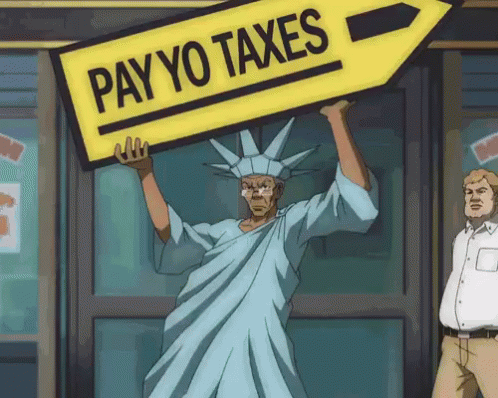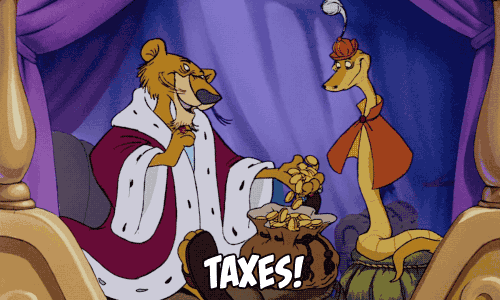#FreelanceFriday: What Freelancers Need to Know Before, During, and After Doing Their Taxes
December 22nd, 2017 by
This blog is part of our Freelance Friday series, where we discuss everything and anything related to freelancers. For more freelance information, tips, and trends, follow us on Twitter.
It’s the end of yet another year. Mixed in with all the holiday celebrations is a sense of closure on the past year and the beginning of a new one. Helping bridge the gap between the old and new is everyone’s favorite time of year–tax season!


Okay, tax season is probably not most people’s favorite time of the year, but it is an extremely important one nonetheless. Everyone who is gainfully employed–including freelancers–are required to pay taxes. And even though Tax Day isn’t until April, you should start preparing for it now (if you haven’t already).
Determining Your Income
Most freelancers work with several companies and/or clients, as well as other jobs and side gigs to make ends meet. Before tax season gets started, it’s important to gather all sources of income so that everything is accounted for and reported. Search your desk, your computer, under the couch, and everywhere else for all the receipts and invoices you accumulated throughout the year.
Taxes are different for everyone, especially freelancers. Freelancing is a unique job in many ways, including major perks like more freedom and flexibility. So, it should come as no surprise that taxes for freelancers is a little different as well.
Self-Employment Taxes
The first major thing that sets freelancer taxes apart is the self-employment tax, which covers Social Security, Medicare, and additional state taxes for individuals who work for themselves. This main part of the self-employment tax comes out to 15.3%. 7.65% covers your share of Social Security and Medicare and another 7.65% for the share an employer would normally pay (though you can deduct all or some of the employer portion). Additional state self-employment taxes vary by location.
Whereas regular wage earners have these taxes withheld from their paycheck, if your independent freelance business generates more than $400 annually, you have to pay this tax during tax season. It is best to plan ahead and set aside some money throughout the year to cover this obligation. This will keep it present in your mind, alleviate pressure, and help eliminate any surprises year after year.
Paying Estimated Taxes Quarterly
Paid periodically throughout the taxable year, estimated taxes are fractional payments of your final year-end tax liability that you ultimately responsible for. The payments are required to be paid by specific dates throughout the year (Apr 15, Jun 15, Sept 15, Jan 15) using specific IRS forms. If you fail to make these payments throughout the year, the IRS will tack on late fees to the total you ultimately owe.
To accurately determine your estimated tax payments, it is crucial that you keep up-to-date and accurate financial records that will allow you to keep an ongoing calculation of your business’ profits. Knowing your profit in any given quarter will help you determine how much you should pay to the IRS for these quarterly payments.
If you have a full or part-time job where you receive a W-2, you can likely void paying estimated taxes simply by increasing your withholding at that job.


Necessary Tax Forms
The main form you will need depends on what kind of freelancer you are. If you freelance as a side gig or as an established LLC, you will report your income and make payment via your annual Form 1040 individual return.
If your freelance business is on a larger scale than that–such as a structured multiple-member LLC or a corporation–you will need to file a separate return for your business. For example, a partnership return requires a Form 1065, a C-corp needs a Form 1120, and an S-corp return uses a Form 1120S. No matter what federal form you end up using, make sure you to all get the corresponding state forms as well!
Next up, is your 1099. If you are paid more than $600 from any one client, they are obligated to send you a Form 1099-MISC. Companies are required to provide contract workers with this form by January 31, so that you have plenty of time between then and Tax Day.
If your freelance payments are sporadic and/or not your main source of income, you can list them under the “Other Income” section of your main tax return. However, if your work is substantial enough to be considered self-employed, you must report this income on a Schedule C attachment to your tax return.


Itemize and Record Business Expenses
One of the advantages of being self-employed and having a 1099 is more flexibility with deductions. The IRS guideline for freelancer tax deductions is that expenses must be ordinary and necessary. A good thing to keep in mind is: if you would have purchased something even if you weren’t running a freelance business, it will likely not qualify for a deduction. And remember to always keep those receipts!
According to TurboTax, freelancers can write off some expenses for: business-related travel and food (up to 50%), office expenses, and required equipment and supplies, as well as continuing education, certifications, registrations, and licensing fees.
Close out the Year and Start Prepping for the New One
Being your own boss means making sure things get done. The biggest part of this is making sure you get paid promptly and accurately. Find out who still owes you money and make sure you get it in time for that year’s taxes.
Another major responsibility is organization, particularly accurate record keeping. If you are scrambling this tax season and in years before, make a commitment to help yourself throughout the year rather than in just the final weeks. Develop a filing system for receipts and invoices (both paper and digital), create spreadsheets to track all work and payments,
Ask Questions and Get Help
Freelancing comes with a lot of perks, but the trade-off is that you have to do your own taxes. It can be difficult, time-consuming, and generally overwhelming. Don’t be afraid to ask for help.
Certified tax preparers and accountants know what needs to be done and how to do it. Take advantage of the offseason to meet with these professionals, because once tax season gets into full swing by February, March, and April their schedule fills up quickly.
Images:


Haha. I am incredibly impressed by your ability as a copywriter. The illustrations showcased in this article were simply amazing and super funny. Are all those paid gif’s or you’ve made that all up. Either way, keep up the excellent composing.
Great points here! Taxes are pretty terrible to deal with, and most especially for freelancers. Thanks for these tips on how to navigate tax season as a freelancer!